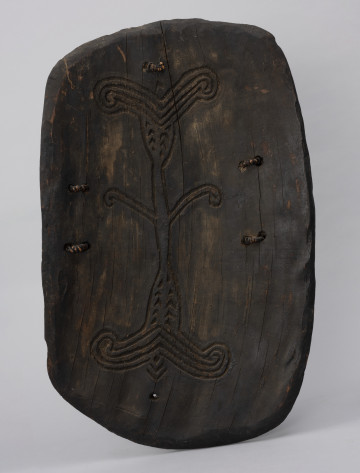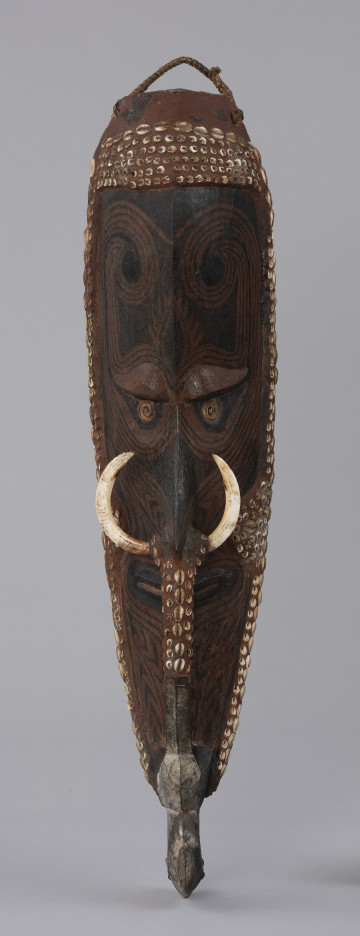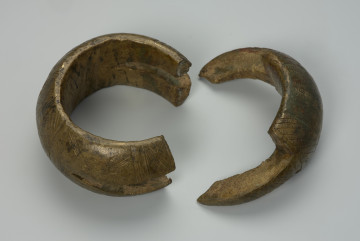
War shield
circa 1950
National Museum in Szczecin
Part of the collection: Art of Papua New Guinea
The presented sculpture depicts a primrose in the form of a hornbill (Bucerotidae), which embodies essential masculine and feminine personality traits in New Guinea culture. The distinguishing feature of all birds belonging to this family is their long, often curved beaks with a horn-like growth. Parental hornbills are known for their exceptional care of their chicks. The females, protecting the young from predators, barricade themselves in the nest with them, while the males provide them with food. The birds' peculiar appearance and natural behaviour have led to the fact that hornbills are considered symbols of masculinity, strength, cohabitation, fertility, and maternal instinct in Papuan culture. Local artists like to use their feathers, beaks and heads to decorate crowns, earrings and other ornaments. Images of hornbills also appear in the work of New Guinea sculptors. The figure in question comes from the Sepik river basin. Its standard features indicate that it was carved in the Lower Sepik, between the village of Angoram and the mouth of the river. Carvings from this region are characterised by a certain uniformity of mannerism referred to as the 'Murik style', the particular feature of which is the long, broad nose of the figures at the base, often reaching to the end of the torso of the carved figures, which is shaped like a bird's beak. It is believed that this style spread over a relatively large area, thanks to trade. One of the common occupations of the Murik people, who lived in the marshy areas around the Murik lakes, was trading in the cult and everyday objects. The sculpture on display is probably an image of the great ancestor, the man with the bird's beak, who came out of the sea and created the first humans. In New Guinean art, images combining human and animal features were identified with great, powerful ancestors, clan founders and heroes known from myths.
Katarzyna Findlik-Gawron
Author / creator
Dimensions
cały obiekt: height: 73 cm, width: 21,9 cm
Object type
sculpture
Creation time / dating
Creation / finding place
Identification number
Location / status

circa 1950
National Museum in Szczecin

1941 — 1960
National Museum in Szczecin

between 1940 — 1950
National Museum in Szczecin
DISCOVER this TOPIC
Castle Museum in Łańcut
DISCOVER this PATH
Educational path